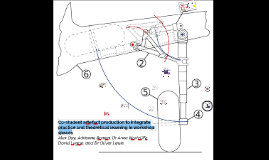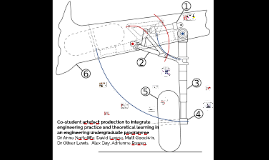Closing the BME attainment gap
reflection
Stokeley Carmichael and Charles Hamilton (1967) - 'institutional racism'
'sub-concious racism' Gillborn, D. (2008)
both are occurring in the society, and receives far less public condemnation than political racism
BME attainment
what's going on...
PAL to aid inclusivity
Results
Growing PAL...
more courses?
larger cohorts?
facilitation cost and time
UK National BME attainment gap 16%, Berry and Loke (2011)
SHU BME good Honours degree gap - 21%
BME students report being lonely, Cotton et al (2011)
The peer assisted learning (PAL)
UCL PAL increased student retention, Angelini (2011)
At SHU 26% Engineering students are BME
BEng Computer and Network Engineering 56% BME Students at level 4 2013-14 (22 students)
4 PAL leaders level 5 2013-14 volunteers
Of the 221 UK & EC level 5 engineering students
56 are BME (as in black minority ethnic) 25% students
165 are white 75% students
145 students have secured a placement by Aug'14
22 BME students have secured a placement 15%
123 white students have secured a placement 85%
Gillborn (2008) argued that the BME and white student achievement gap is a permanent feature of English education system.
References
Angelini, M. (2011) Measuring the effects of Peer-Assisted Learning on the development of students in transition to maths-based teaching programs. In CETL-MSOR Conference 2011 (p. 9).
Berry, J. & Loke, G. (2011) Ethnicity and Degree Attainment. DfeS Research Report RW92. London: DfES
Boliver, V. (2013) How fair is access to more prestigious UK Universities? British Journal of Sociology, 64(2): 344-364.
Brown, J. (2005). The world café: Shaping our futures through conversations that matter. Berrett-Koehler Store.
Carmichael, S. and Hamilton, C. (1967) Black Power: The Politics of Liberation in America. New York: Vintage.
Cotton, D., George, R. & Joyner, M. (2010) The Gender and Ethnicity Attainment Gap Project: Executive Summary. Plymouth: Teaching and Learning Directorate, Plymouth University.
Equality Challenge Unit. (2014) Equality in higher education: statistical report 2013 http://www.ecu.ac.uk/publications/equality-in-higher-education-statistical-report-2013/
Gillborn, D. (2008) Racism and education: Coincidence or conspiracy?. Routledge.
NUS. (2011). Race for equality. A report on the experiences of Black students in further and higher education. London
Rafferty, A. (2012) Ethnic penalties in graduate level over-education, unemployment and wages: evidence from Britain. Work, Employment and Society, 26(6): 987-1006.
**All SHU data came from the E&D http://www.shu.ac.uk/university/overview/diversity/pdf/Equality-Information-Report-2014-FINAL.pdf
Support for BME students experience is derisory, NUS (2011)
7% of white, 19% of BME graduates declared they were unemployed.
Overall 76% of SHU's white, 60% of our BME graduates were in work.
SHU Eng' PAL
Two day training for leaders with Midwives PAL programme, but ...
Biweekly PAL sessions with
2 PAL leaders (alternating/covering)
Facilitator - Jayne Evans
not course leader
Content PAL sessions
1st year specified, plan sheets
or leaders suggested
PAL leaders debrief after PAL session with Facilitator;
Reflect on sessions
Plan next session
Facilitator typed up
Of the 221 UK & EC level 5 engineering students
56 are BME (as in black minority ethnic) 25% students
165 are white 75% students
145 students have secured a placement by Aug'14
22 BME students have secured a placement 15%
123 white students have secured a placement 85%
85% of the cohort regularly attended PAL sessions (91% BME & 75% White students)
75% BME students passing level 4 at 1st attempt
82% BME students passing level 4 at 2nd attempt
18% referred = 2 students; 1 referred again in Maths & 1 student transferred to level 4 BA Media course)
62.5% white students passing level 4 at 1st attempt
37.5% referred = 3 students; 2 students transferred to level 4 BSc Nets' Management and Design & 1 student referred again at 2nd attempt in multiply modules
All PAL leaders secured placements
Initial pilot PAL assisted supporting BME attainment gap, but still room for improvement.
What, whom, how to make a PAL Programme Sustainable for all students?
At your Institutions - workshop activity
• helped me understand specific lecture material - 11/12 agreed or strongly agreed
• helped me with assignments and exams - 9/12 agreed or strongly agreed
• clarified course concepts - 8/12 agreed or strongly agreed
• showed me different ways to learn material - 7/12 agreed or strongly agreed
• increased my confidence in my ability to do this course - 6/12 agreed or strongly agreed
• developed my group working skills - 6/12 agreed or strongly agreed
• helped me speak up and contribute in class - 6/12 agreed or strongly agreed
• helped me to stay on the BEng CNE course - 3/12 students agreed or strongly agreed
• helped me to stay on a course at university - 4/12 agreed or strongly agreed
Survey results
Anne Nortcliffe, Cathy Keech, Jayne Evans, Sherin, Jack, Phil and Jake
Present Remotely
 Send the link below via email or IM
Send the link below via email or IM
 Present to your audience
Present to your audience
- Invited audience members will follow you as you navigate and present
- People invited to a presentation do not need a Prezi account
- This link expires 10 minutes after you close the presentation
- A maximum of 30 users can follow your presentation
- Learn more about this feature in our knowledge base article
Do you really want to delete this prezi?
Neither you, nor the coeditors you shared it with will be able to recover it again.
Make your likes visible on Facebook?
Connect your Facebook account to Prezi and let your likes appear on your timeline.
You can change this under Settings & Account at any time.
Closing the BME Attainment Gap
No description
by
Tweet



